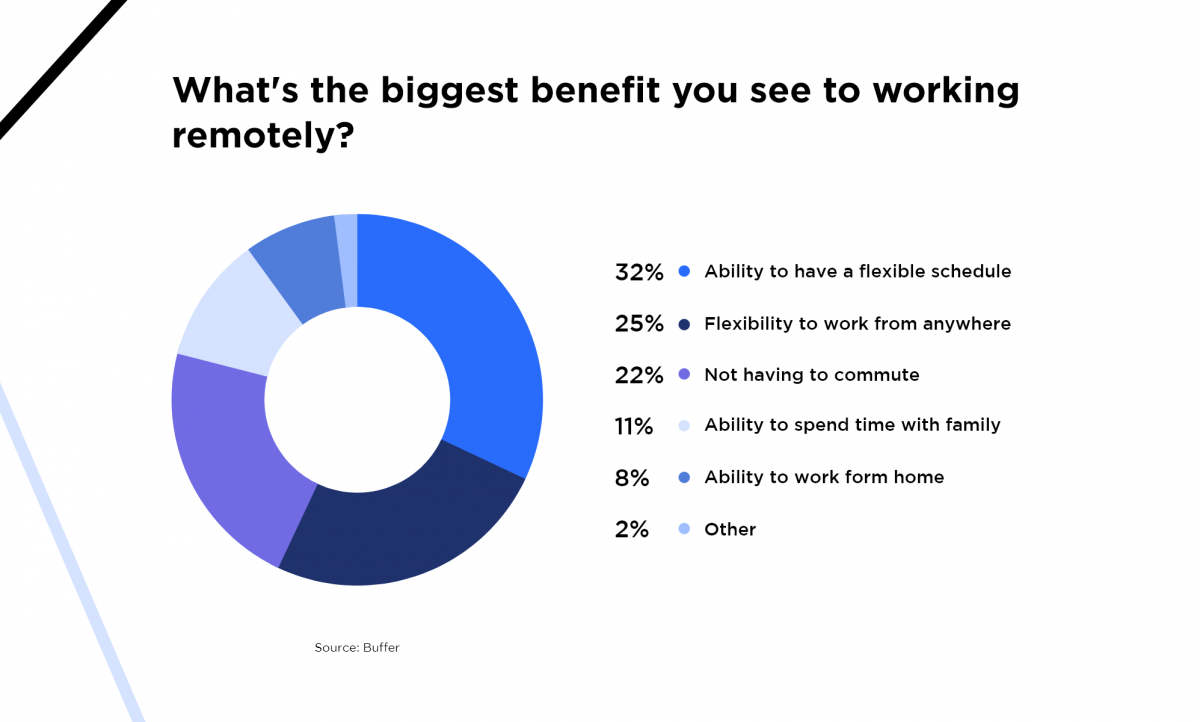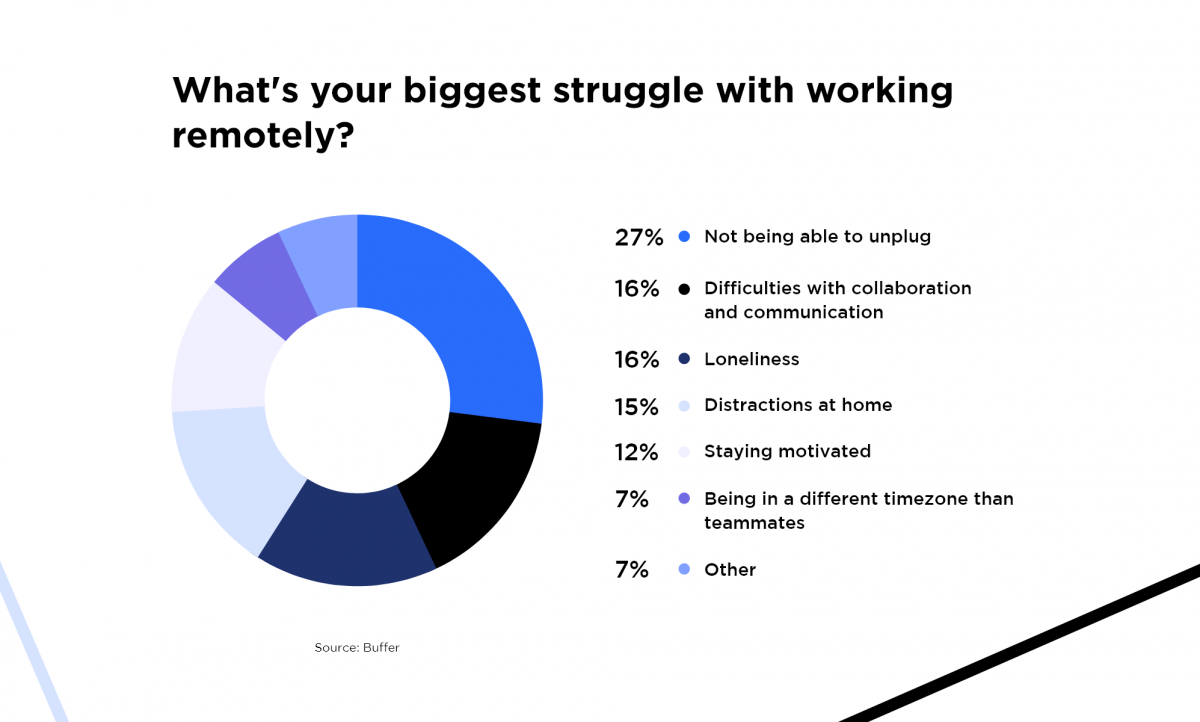Welcome to Motion Software’s Remote Work Report! A series of articles dedicated to the latest trends in the world of remote work. In this first report, we’ll be looking at the most significant changes that have taken place in the world of remote work in 2021.
We all know that 2020 was the year when it all changed on a mass scale. Since then, we’ve had the chance to think, analyze, adapt and improve the way we work. Shaking off the initial stress of this sudden change, 2021 was the year that provided a more sober environment for us to really take a deeper look into what’s been happening and what lies ahead for the world of work.
Over the past 12 months, a number of surveys were conducted over thousands of employees all over the world. We couldn’t help but notice several trends that seem to be shaping among workers and employers alike.
Remote work is here to stay
Simply put – there’s no going back. The virus has broken down many barriers that used to prevent remote work from happening. Almost two years into the pandemic it is evident that this “forced workplace experiment” is not only a success but many are pointing it as one of the few positives that came out of the pandemic.
Now let’s dive into the statistics. According to GitLab’s recent remote work report, we see three key takeaways:
“If remote work was no longer an option, 1 in 3 would leave their jobs.”
“4 in 5 people would recommend remote work to a friend. “
“82% agreed that remote work is the future of work”
Employee expectations are shifting. According to Owl Labs annual remote work report, 84% of employees shared that working remotely after the pandemic would make them happier. Some are choosing to resign and look for a better lifestyle if remote work is not possible with their current employer.
The pros and cons of working remotely
Many have now had the time to experience and carefully analyze the advantages of working remotely.

Naturally, this transition also comes with a number of challenges that need to be addressed.

Everybody wins
Looking at the stats, it is obvious that this model lead to an overall improvement of work processes not just for employees but also for employers. When asked what the key benefits are for their companies, employers cited the following:
- 42% – increased productivity
- 38% – increased efficiency
- 31% – increased employee morale
- 24% – less bureaucracy
- 20% – improved documentation and process
Employees’ expectations don’t always meet with the employer’s strategy. According to Owl Labs report, 39% of employers are requiring employees to be in the office full-time post-pandemic. However, only 29% want to be.
Gartner forecasts that by the end of 2021 51% of the knowledge workers will be remote.
Diversity wins
According to GitLab’s statistics, remote work is a catalyst for diversity at the workplace. In a remote world, women make up 58% of the workforce (38% of all workforce – remote & not). A significantly higher percentage of workers have identified as LGBTQ+. On the other hand, Forbes have recently raised the issue that remote and hybrid models could go either way when it comes to diversity. They have highlighted the importance of leaders actually taking part in nurturing a healthy, inclusive and encouraging environment for all. Understanding people’s needs and differences is crucial when building the company’s policy. It all falls on the leaders’ shoulders to make this a success and let diversity win.
Working across time zones
73% of all respondents in the Buffer remote work survey shared that their company is operating in multiple time zones. This has become the new norm for many workers. 74% of the surveyed employees have shared that members of their immediate team are in multiple time zones. Many have pointed to asynchronous communication as the best way to handle in-team tasks across time zones with as many as 70% of the companies now encouraging asynchronous communication.
Reimagining the office
How do we find the balance between providing the ability for real human in-office interactions while not putting off employees who would rather work at home? Some surveys have shown that around a third of employees are worried about the potential future inability to collaborate effectively with their colleagues. However, researchers at the Massachusetts Institute of Technology’s Sloan School of Management have found that we actually no longer need the office. Not just because most people prefer to keep working remotely. They have also analyzed the team’s productivity and their collective intelligence which was just as high when compared to face-to-face interactions.
Having said that, the office remains a hard habit to shake and some consider it a valuable part of our social life. In fact, some employees are longing for real human interaction and are feeling disconnected and even depressed. It seems as though a more scaled-down version of the office should remain an option for those who feel they thrive better in such an environment.
The hybrid disruption
This naturally leads us to discussing what lies ahead. Microsoft has recently labeled hybrid working “The next great disruption”. After having experienced both extremes of working at a particular location and being completely remote, it is a logical progression to settle somewhere in the middle and find a more blended approach. In 2021 we’ve all heard the term “the great resignation”. And this has everything to do with what’s now expected of employers. 40% of employees are considering leaving their current employer. Many will soon realize that going hybrid is the only way to keep their valuable talent.

“A hybrid workforce is the future of the work, with both remote and on-site part of the same solution to optimize employers’ workforce needs”
– Ranjit Atwal, senior research director at Gartner
Who is at the forefront?
In a remote world, the battle for talent has made things harder for European startups as large overseas companies can now attract local talent much easier. According to Pitchbook, the huge increase in VC funding (up 89% from 2020) has also put pressure on the already difficult and competitive hiring process for startups. In a post-pandemic world, VCs will be looking to invest in startups that will define the way we work. Among remote work startups that should be on every investor’s watchlist are:
- Deel – a payroll and compliance platform for international employees and contractors
- Remote.com – offering international payroll, benefits, and compliance services for employees and contractors
- Turning.com – an information technology company that enables start-ups, businesses, and organizations to hire software engineers
- Sifted – providing an HR tech platform for one of Europe’s biggest remote employers
- Cord – making collaboration through different apps easier and more effective
- Akiflow – a task manager and calendar desktop
- Boundless – facilitating remote work and remote teams
Countless other startups are currently hoping to become the next essential remote work tool to be used on a mass scale. Sifted have compiled a wonderful list of many other European remote work startups to keep an eye on in the coming months.
Looking ahead
Burnouts
We are still at the very early stages of analyzing the potential downsides of this quick transition. However, what seems to be shaping as the next major issue for remote workers is the inability to unplug. Working extra hours appears to be sneaking in naturally. Employees are often not even without realizing it. At present, most employers don’t seem concerned about this potential problem. However, they should be at the forefront of educating employees on how to put boundaries and get quality rest. Prioritizing wellbeing and recharging is a way to address this and a possible way out.
Hybrid Infrastructure
Employers are experimenting with new models in search of the golden mean. It’s not only the office that needs to be reimagined to fit with the needs of the hybrid world. In the coming months, we can’t wait to witness all the clever ways companies would adopt when reimagining the tools, resources, and facilities they use. According to OWL Labs, currently, only 38% of employers have upgraded their video technologies to elevate communication quality. In a hybrid world rewiring offices and allowing for better connection will be crucial to enable seamless collaboration regardless of one’s location.
You might also want to read:
How to make the hybrid work model a success for your company?
The Evolution of Work – 5 trends that will define the next decade